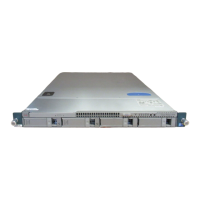Procedure
Step 1
Connect to a single upstream switch. See Connecting to a Single Upstream Switch, on page 60.
Step 2
Connect to multiple upstream switches. SeeConnecting to Multiple Upstream Switches, on page 61.
Step 3
Manually configure interface subgroups. See Manually Configuring Interface Subgroups, on page 65.
Step 4
Pin a vEthernet interface to a subgroup. See Pinning a vEthernet Interface to a Subgroup, on page 66.
Step 5
Pin a control or packet VLAN to a subgroup. See Pinning a Control or Packet VLAN to a Subgroup, on page
67.
Connecting to a Single Upstream Switch
You can configure a port channel whose ports are connected to the same upstream switch. If the ports are
connected to multiple upstream switches, see Connecting to Multiple Upstream Switches, on page 61
.
Before You Begin
Know that the channel group number assignment is made automatically when the port profile is assigned to
the first interface.
Procedure
PurposeCommand or Action
Enters global configuration mode.switch# configure terminal
Step 1
Enters port profile configuration mode for the named port profile.switch(config)# port-profile [
type {ethernet | vethernet}]
name
Step 2
• name—Specifies the port profile name, which can be up to
80 characters and must be unique for each port profile on the
Cisco Nexus 1000V.
• type—Specifies the port profile as an Ethernet or vEthernet
type. Once configured, this setting cannot be changed. The
default is the vEthernet type.
For configuring port channels, specify the port profile as an
Ethernet type.
Defining a port profile as an Ethernet type allows the port
profile to be used for physical (Ethernet) ports. In the vCenter
Server, the corresponding port group can be selected and
assigned to physical ports (PNICs).
If a port profile is configured as an Ethernet type, it
cannot be used to configure VMware virtual ports.
Note
Cisco Nexus 1000V for VMware vSphere Interface Configuration Guide, Release 5.x
60
Configuring Port Channels
Creating a Port Profile for a Port Channel

